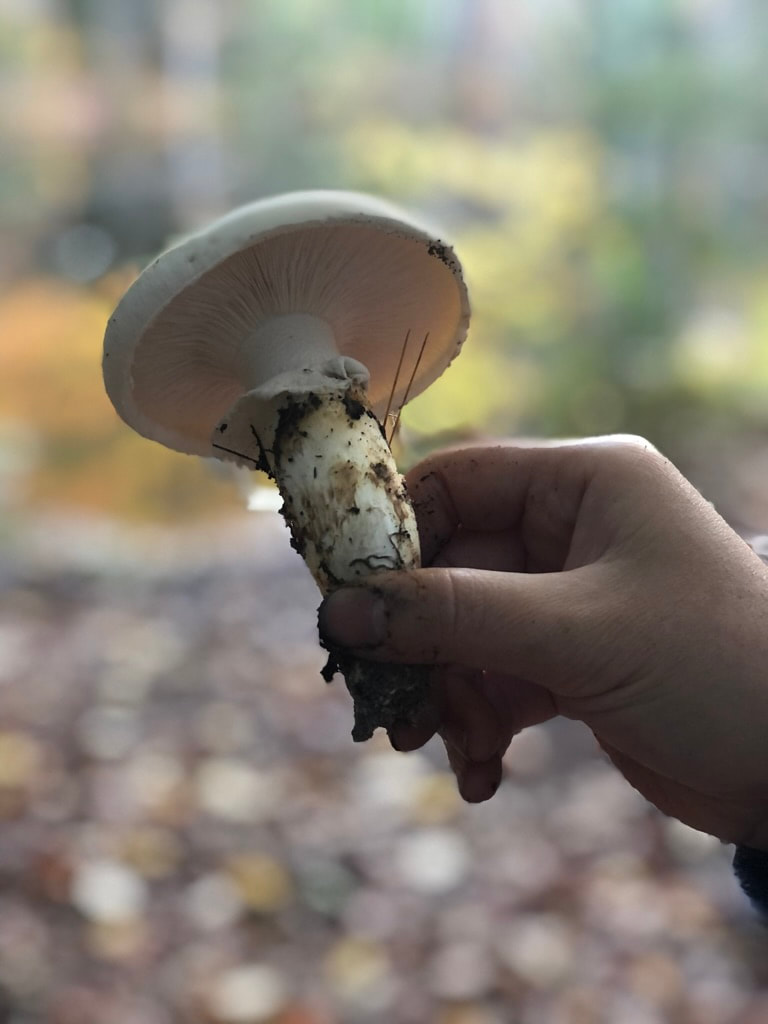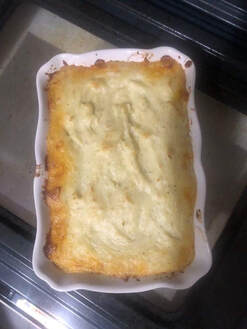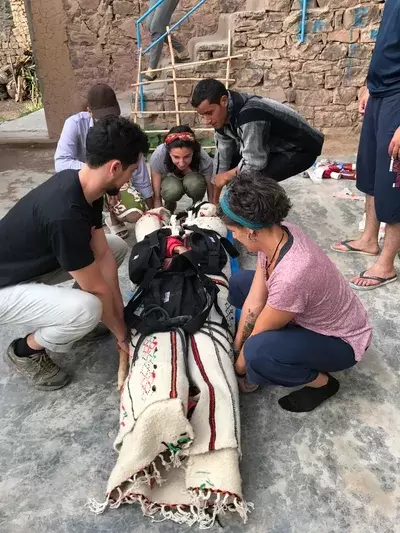MCHP ADN 2023 Cohort
Transition To Professional Practice
Health Project

BE RIGHT
low stress
do the right things for the right reasons

MOVE RIGHT
never stop moving even if slowly
play and explore and sniff and look and hear and feel
never stop moving even if slowly
play and explore and sniff and look and hear and feel
EAT RIGHT
Dash Diet
eat well, eat varied, be aware of your food and where it came from
What is blood pressure?
Arteries are the tubes that carry blood away from your heart. Every time your heart beats, it pumps blood through your arteries to the rest of your body. Blood pressure is how hard your blood pushes against the walls of your arteries when your heart pumps blood.
Blood pressure is measured with 2 numbers. The first number is the pressure in your arteries when your heart beats. The second number is the pressure in your arteries when your heart relaxes between beats.
What is hypertension?
Hypertension is the medical term for high blood pressure. High blood pressure usually has no symptoms, so it’s sometimes called a “silent killer.” The only way to know if you have high blood pressure is to get tested.
How can I get my blood pressure checked?
Aside from doctors offices, many shopping malls, pharmacies, and grocery stores have blood pressure machines you can use in the store. You can also buy a home blood pressure monitor at a drugstore. If the test shows that your blood pressure is high or elevated, talk to your doctor.
What puts me at increased risk for blood pressure?
Your risk for high blood pressure goes up as you get older. You’re also at increased risk for high blood pressure if you:
Are African American
Are overweight or have obesity
Are currently pregnant or had high blood pressure during a past pregnancy
Don’t get enough physical activity
Drink too much alcohol
Smoke
Don’t eat a healthy diet
Have kidney failure, diabetes, or some types of heart disease
What can I do if I have high blood pressure?
If you have high blood pressure, you may need medicine to control it.
Take these steps to lower your blood pressure:
Eat healthy, including foods that are low in saturated fat and sodium.
Get active — aim for 150 minutes a week of moderate aerobic activity like walking fast, dancing, riding bikes, and swimming.
Remember to take medicines as prescribed by your doctor.
If you choose to drink alcohol, drink only in moderation. That means 1 drink or less in a day for women and 2 drinks or less in a day for men.
Manage your stress - this can help prevent and control high blood pressure. Deep breathing and meditation are good ways to relax and manage stress.
Quit smoking - Smoking damages your heart and blood vessels. Quit smoking to help lower your risk of high blood pressure, stroke, and heart disease.
DASH diet
DASH stands for Dietary Approaches to Stop Hypertension. The DASH diet is a healthy-eating plan designed to help treat or prevent high blood pressure. The DASH diet is a flexible and balanced eating plan that helps create a heart-healthy eating style for life. It's easy to follow using foods found at your grocery store. Studies have shown that the DASH diet can lower blood pressure in as little as two weeks
DASH diet and sodium
The standard DASH diet limits sodium to 2,300 mg a day…that's roughly the amount of sodium in 1 teaspoon of table salt.
A lower sodium version of DASH restricts sodium to 1,500 mg a day. You can choose the version of the diet that meets your health needs. If you aren't sure what sodium level is right for you, talk to your doctor.
You can further reduce sodium by:
Using sodium-free spices or flavorings instead of salt
Not adding salt when cooking rice, pasta or hot cereal
Choosing fresh or frozen vegetables
Choosing fresh or frozen skinless poultry, fish, and lean cuts of meat
Reading food labels and choosing low-sodium or no-salt-added options
DASH diet: What to eat
The DASH diet is rich in vegetables, fruits and whole grains. It includes fat-free or low-fat dairy products, fish, poultry, beans and nuts. When following DASH, it is important to choose foods that are:
Rich in potassium, calcium, magnesium, fiber and protein
Low in saturated fat
Low in sodium
DASH diet: Recommended servings
The DASH diet provides daily and weekly nutritional goals. The number of servings you should have depends on your daily calorie needs.
Grains: 6 to 8 servings a day. One serving is one slice bread, 1 ounce dry cereal, or 1/2 cup cooked cereal, rice or pasta.
Vegetables: 4 to 5 servings a day. One serving is 1 cup raw leafy green vegetable, 1/2 cup cut-up raw or cooked vegetables, or 1/2 cup vegetable juice.
Fruits: 4 to 5 servings a day. One serving is one medium fruit, 1/2 cup fresh, frozen or canned fruit, or 1/2 cup fruit juice.
Fat-free or low-fat dairy products: 2 to 3 servings a day. One serving is 1 cup milk or yogurt, or 1 1/2 ounces cheese.
Lean meats, poultry and fish: six 1-ounce servings or fewer a day. One serving is 1 ounce cooked meat, poultry or fish, or 1 egg.
Nuts, seeds and legumes: 4 to 5 servings a week. One serving is 1/3 cup nuts, 2 tablespoons peanut butter, 2 tablespoons seeds, or 1/2 cup cooked legumes (dried beans or peas).
Fats and oils: 2 to 3 servings a day. One serving is 1 teaspoon soft margarine, 1 teaspoon vegetable oil, 1 tablespoon mayonnaise or 2 tablespoons salad dressing.
Sweets and added sugars: 5 servings or fewer a week. One serving is 1 tablespoon sugar, jelly or jam, 1/2 cup sorbet, or 1 cup lemonade.
Dash Diet
eat well, eat varied, be aware of your food and where it came from
What is blood pressure?
Arteries are the tubes that carry blood away from your heart. Every time your heart beats, it pumps blood through your arteries to the rest of your body. Blood pressure is how hard your blood pushes against the walls of your arteries when your heart pumps blood.
Blood pressure is measured with 2 numbers. The first number is the pressure in your arteries when your heart beats. The second number is the pressure in your arteries when your heart relaxes between beats.
What is hypertension?
Hypertension is the medical term for high blood pressure. High blood pressure usually has no symptoms, so it’s sometimes called a “silent killer.” The only way to know if you have high blood pressure is to get tested.
How can I get my blood pressure checked?
Aside from doctors offices, many shopping malls, pharmacies, and grocery stores have blood pressure machines you can use in the store. You can also buy a home blood pressure monitor at a drugstore. If the test shows that your blood pressure is high or elevated, talk to your doctor.
What puts me at increased risk for blood pressure?
Your risk for high blood pressure goes up as you get older. You’re also at increased risk for high blood pressure if you:
Are African American
Are overweight or have obesity
Are currently pregnant or had high blood pressure during a past pregnancy
Don’t get enough physical activity
Drink too much alcohol
Smoke
Don’t eat a healthy diet
Have kidney failure, diabetes, or some types of heart disease
What can I do if I have high blood pressure?
If you have high blood pressure, you may need medicine to control it.
Take these steps to lower your blood pressure:
Eat healthy, including foods that are low in saturated fat and sodium.
Get active — aim for 150 minutes a week of moderate aerobic activity like walking fast, dancing, riding bikes, and swimming.
Remember to take medicines as prescribed by your doctor.
If you choose to drink alcohol, drink only in moderation. That means 1 drink or less in a day for women and 2 drinks or less in a day for men.
Manage your stress - this can help prevent and control high blood pressure. Deep breathing and meditation are good ways to relax and manage stress.
Quit smoking - Smoking damages your heart and blood vessels. Quit smoking to help lower your risk of high blood pressure, stroke, and heart disease.
DASH diet
DASH stands for Dietary Approaches to Stop Hypertension. The DASH diet is a healthy-eating plan designed to help treat or prevent high blood pressure. The DASH diet is a flexible and balanced eating plan that helps create a heart-healthy eating style for life. It's easy to follow using foods found at your grocery store. Studies have shown that the DASH diet can lower blood pressure in as little as two weeks
DASH diet and sodium
The standard DASH diet limits sodium to 2,300 mg a day…that's roughly the amount of sodium in 1 teaspoon of table salt.
A lower sodium version of DASH restricts sodium to 1,500 mg a day. You can choose the version of the diet that meets your health needs. If you aren't sure what sodium level is right for you, talk to your doctor.
You can further reduce sodium by:
Using sodium-free spices or flavorings instead of salt
Not adding salt when cooking rice, pasta or hot cereal
Choosing fresh or frozen vegetables
Choosing fresh or frozen skinless poultry, fish, and lean cuts of meat
Reading food labels and choosing low-sodium or no-salt-added options
DASH diet: What to eat
The DASH diet is rich in vegetables, fruits and whole grains. It includes fat-free or low-fat dairy products, fish, poultry, beans and nuts. When following DASH, it is important to choose foods that are:
Rich in potassium, calcium, magnesium, fiber and protein
Low in saturated fat
Low in sodium
DASH diet: Recommended servings
The DASH diet provides daily and weekly nutritional goals. The number of servings you should have depends on your daily calorie needs.
Grains: 6 to 8 servings a day. One serving is one slice bread, 1 ounce dry cereal, or 1/2 cup cooked cereal, rice or pasta.
Vegetables: 4 to 5 servings a day. One serving is 1 cup raw leafy green vegetable, 1/2 cup cut-up raw or cooked vegetables, or 1/2 cup vegetable juice.
Fruits: 4 to 5 servings a day. One serving is one medium fruit, 1/2 cup fresh, frozen or canned fruit, or 1/2 cup fruit juice.
Fat-free or low-fat dairy products: 2 to 3 servings a day. One serving is 1 cup milk or yogurt, or 1 1/2 ounces cheese.
Lean meats, poultry and fish: six 1-ounce servings or fewer a day. One serving is 1 ounce cooked meat, poultry or fish, or 1 egg.
Nuts, seeds and legumes: 4 to 5 servings a week. One serving is 1/3 cup nuts, 2 tablespoons peanut butter, 2 tablespoons seeds, or 1/2 cup cooked legumes (dried beans or peas).
Fats and oils: 2 to 3 servings a day. One serving is 1 teaspoon soft margarine, 1 teaspoon vegetable oil, 1 tablespoon mayonnaise or 2 tablespoons salad dressing.
Sweets and added sugars: 5 servings or fewer a week. One serving is 1 tablespoon sugar, jelly or jam, 1/2 cup sorbet, or 1 cup lemonade.





